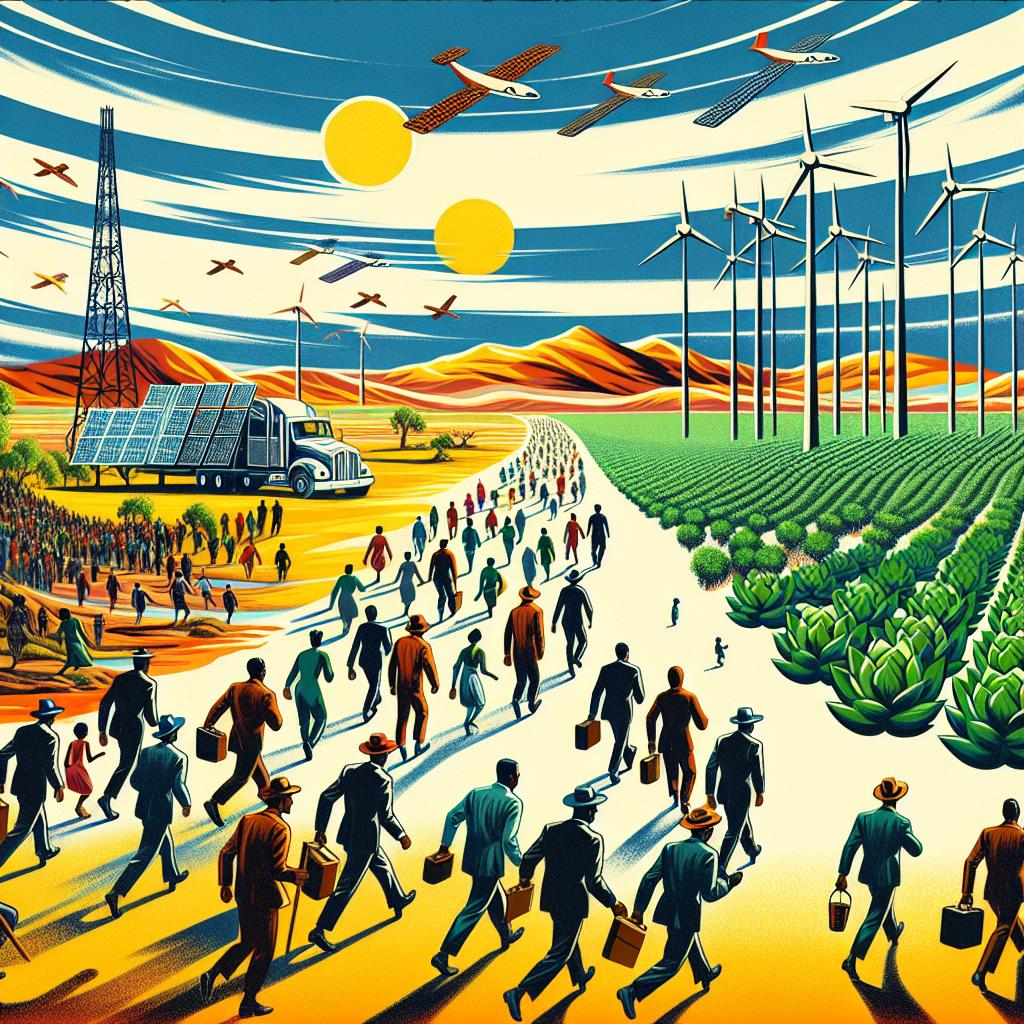In recent years, the growing urgency of climate change has transcended the realm of environmental science, sparking contentious political debates and redefining our understanding of global migration. As rising sea levels, traumatic weather events, and sprawling deserts uproot communities, the dialogue surrounding immigration policies has become increasingly intertwined with environmental issues. Effectively, climate change is fueling a new kind of migration, creating what experts and advocates refer to as ‘climate refugees.’
“Countries are grappling with how to address climate refugees, who are displaced by environmental factors beyond their control.”
The Emergence of Climate Refugees
Climate refugees cannot be easily categorized under today’s political conventions of refugee status which typically relate to persecution. Instead, they emerge from places where their home environments have become untenable, often resulting from a nexus of disasters and socio-economic weaknesses. According to a 2019 report by the Internal Displacement Monitoring Centre, approximately 24 million people are displaced each year due to disasters like floods, hurricanes, and droughts.
What distinguishes climate refugees from other migrants, however, is the compelling argument for acknowledging their plight at a policy-making level. They are victims of climate change who have been forced to migrate not out of personal choice but out of necessity. This raises profound questions for policymakers — in particular, those governing immigration and border enforcement policies.

Political Implications of Climate-Induced Migration
As nations face mounting pressure to stabilize their economies, climates, and populations, immigration debates are growing ever more heated. In the United States, for example, border security policies have shifted significantly in the face of emerging geopolitical realities influenced by climate change. On the southern border, conditions in Central America, exacerbated by drought and extreme weather, have prompted thousands of individuals to seek refuge in North America.
This trend is mirrored in various regions of the world, necessitating coordinated global responses. For instance, in the European context, refugee crises prompted by climate impacts further complicate the already frayed narratives surrounding immigration. Countries grapple not only with how to admit those fleeing adverse environmental conditions but also with internal political divisions fueled by fears of resource scarcity and cultural dilution.
A Global Challenge and Its Solutions
As different nations approach climate migration, not all responses fit neatly within existing legal frameworks. Unlike traditional refugees, climate refugees often find no official channels for relief or resettlement. Questions surrounding their rights and responsibilities in a legal context complicate diplomatic conversations and can lead to international delays in food, aid, and assistance responses.
This is where innovative, compassionate policy responses must take the fore. Countries and global institutions need to establish protocols for recognizing climate-induced displacement. The UN Refugee Agency, alongside climate-focused non-profits, has begun to advocate for agreements that recognize climate refugees, offering a sense of legal legitimacy to their plight.
Steps could also include:
1. Implementing pathways for climate refugees within existing asylum processes.
2. Supporting adaptation strategies in vulnerable areas to mitigate out-migration.
3. Reinforcing international collaborations to facilitate shared resources and responsibilities.
Addressing climate migration through global pacts rather than unilateral measures will not only ensure legal protection for displaced individuals but also forge pathways for sustainable futures across borders.
The Need for a Coordinated Global Approach
The intersection of climate and immigration policies creates a pressing need for coordinated global responses. Historically, nations have grappled with competing national interests; yet, the scale and urgency posed by climate change emphasize an essential paradigm shift. Transnational cooperation is now vital.
Strategic collaborations can take note of both historical migration patterns and future projections to formulate equitable policies. This approach holds potential not only for acknowledging the rise of climate refugees but also for enhancing social cohesion and ecological resilience globally.
“The intersection of climate and immigration policies highlights the need for coordinated global responses.”
In this pursuit, failure to adapt or innovate can lead to harrowing human costs along with strained national resources. A commitment to cooperative action can serve as a test case for how global governance might effectively operate amidst the diverse challenges climate change presents. As nations begin to concede that climate change knows no borders, the hope remains that international frameworks can evolve to protect those who, through no fault of their own, are caught in its relentless wake.



